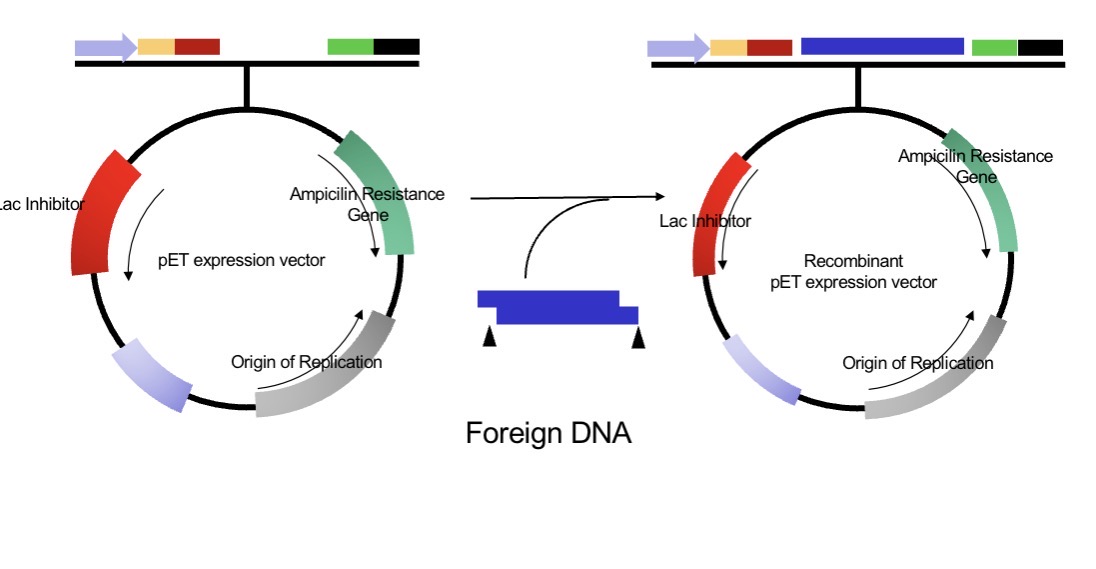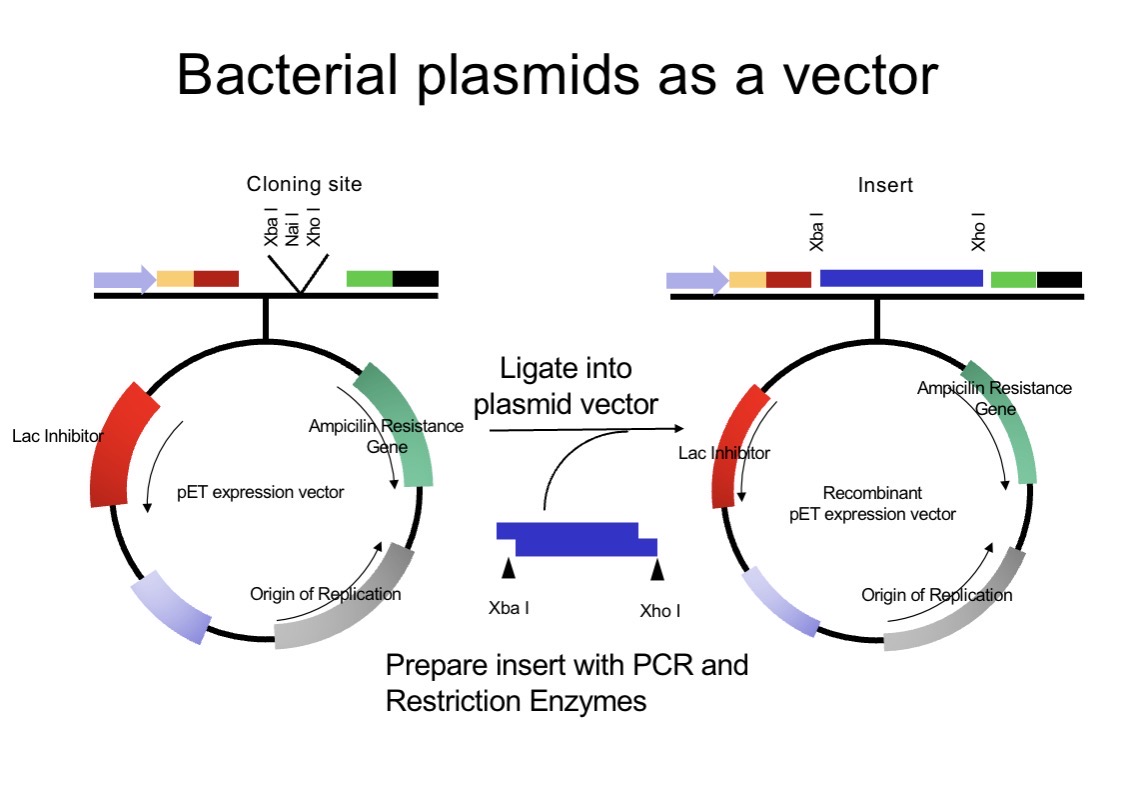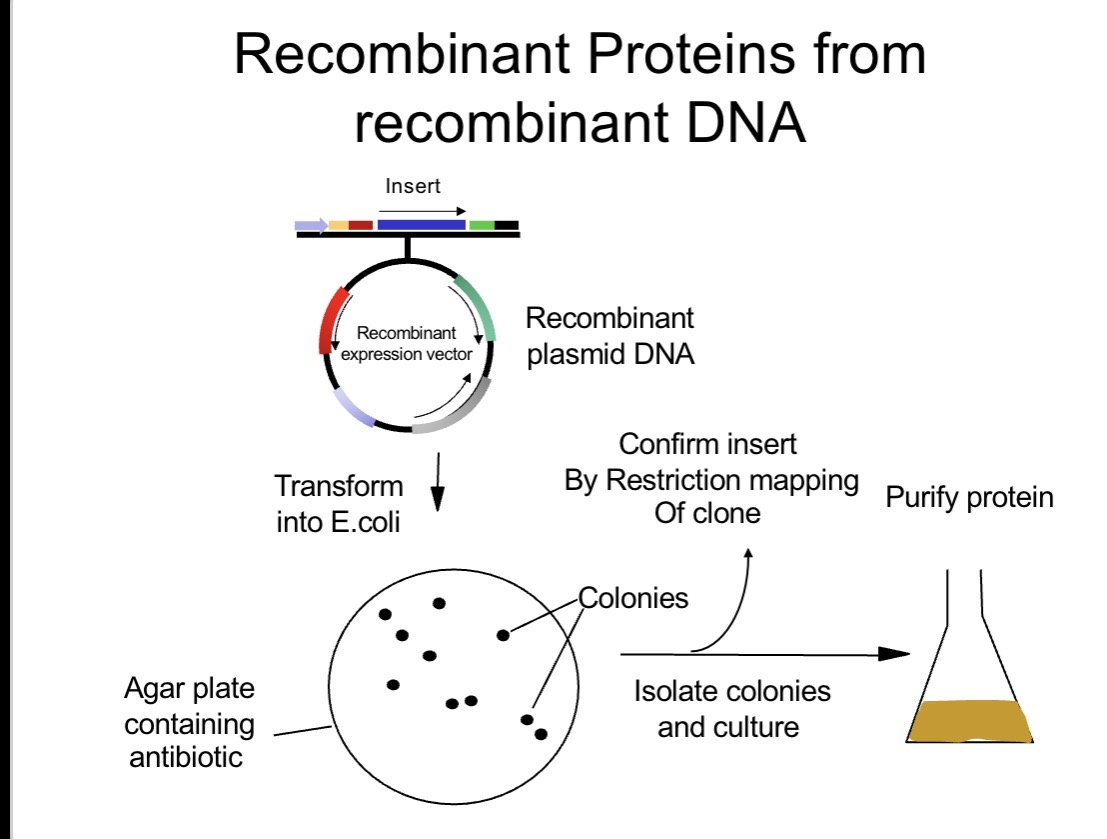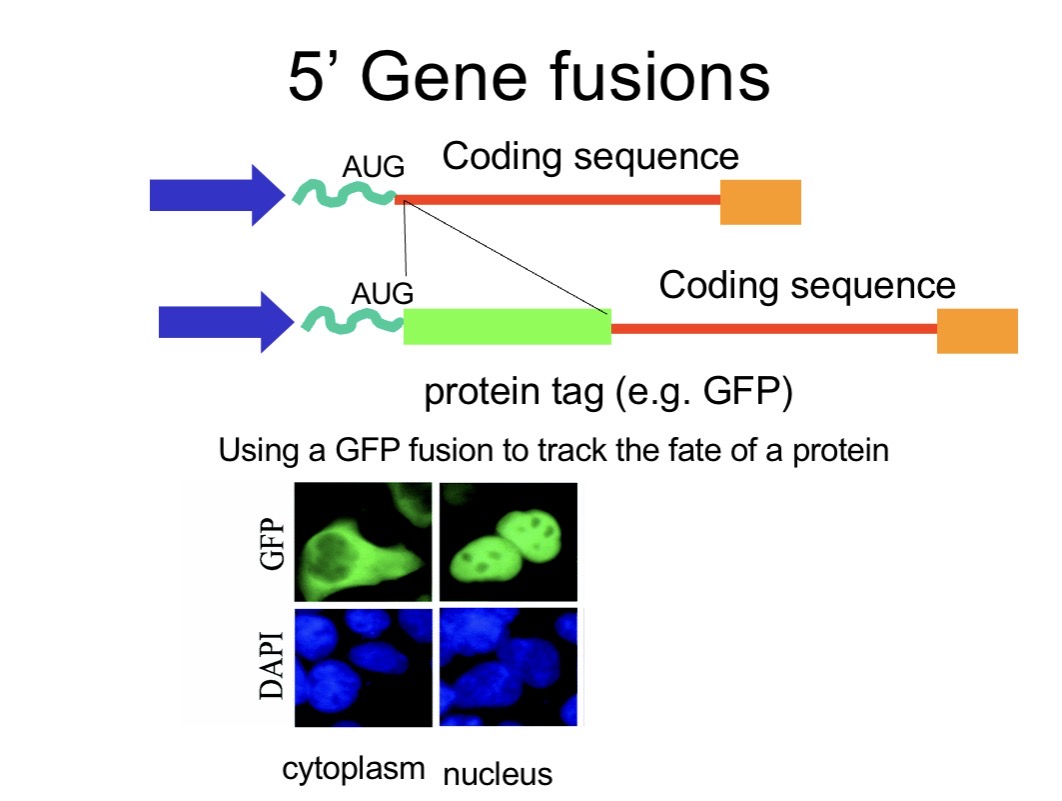Recombinant DNA and cloning vectors
1/19
There's no tags or description
Looks like no tags are added yet.
Name | Mastery | Learn | Test | Matching | Spaced |
|---|
No study sessions yet.
20 Terms
What is recombinant DNA technology?
It is the process of joining DNA molecules from different sources to form a new DNA sequence.
It allows scientists to express, study, and manipulate genes in a chosen host. Applications include producing therapeutic proteins (e.g. insulin, interferons), studying gene function, and creating genetically modified organisms.
Define cloning vectors and give examples.
Cloning vectors are DNA molecules that carry foreign DNA into a host cell for replication or expression.
Examples:
Plasmids – small circular DNA in bacteria.
Phages – bacterial viruses used for larger inserts.
Viruses – vectors for eukaryotic cells (e.g. lentivirus, baculovirus).
Artificial chromosomes – YACs (yeast artificial chromosomes) for very large DNA segments.
What makes plasmids useful as vectors?
They are discrete, circular double-stranded DNA found in many bacteria.
Key features:
Replicate independently of chromosomal DNA (extra-chromosomal).
Transferable between bacteria (e.g. antibiotic resistance).
Easily engineered to carry foreign genes and propagate them.

What key elements does a plasmid vector contain?
Origin of replication (ori): ensures replication inside host bacteria.
Selectable marker: e.g. ampicillin-resistance gene to identify cells with the vector.
Multiple cloning site (MCS): region with unique restriction enzyme sites for inserting foreign DNA.
Promoter/Regulatory elements: control gene expression.
Optional tags or reporter genes: aid protein purification or visualisation.

How are plasmid vectors modified for lab use?
Naturally occurring plasmids are “cut down” and engineered to be:
- Small (≈4–5 kb) and easy to manipulate.
- High copy number for high yield.
- Contain MCS and selectable markers.
- Able to accept DNA inserts without losing replication ability.
Steps in creating a recombinant plasmid
Cut the plasmid vector at specific restriction sites (e.g. XbaI, XhoI).
Insert foreign DNA fragment.
Ligate insert to the vector with DNA ligase.
Transform into E. coli.
Select colonies on antibiotic agar.
Confirm insert by restriction mapping or sequencing.

Why use plasmids as recombinant tools?
They enable controlled gene expression in living organisms for research and biopharmaceutical production.
Benefits:
- Can alter protein properties or localisation.
- Allow inducible or high-level expression.
- Support fusion to tags for purification or therapeutic use.
Examples of recombinant proteins in medicine
Human insulin → diabetes.
Interferons α & β → viral hepatitis, MS.
Erythropoietin → anaemia from kidney disease.
Factor XIII → haemophilia.
TPA → stroke and embolism.
Humanised antibodies → biologics (>50 % of new drug approvals in recent years).
What are the requirements for a bacterial expression plasmid?
Origin of replication functional in E. coli.
Antibiotic marker (e.g. ampicillin).
Multiple cloning site with restriction sites (EcoRI, BamHI, HindIII, XhoI, XbaI).
Promoter (con- or inducible).
Terminator sequence.
lacI gene (lac repressor) if using an inducible lac system.
Difference between constitutive and inducible promoters?
Constitutive: always on → continuous protein production.
Inducible: off until triggered (e.g. by lactose or IPTG). Useful when protein is toxic or burdensome to cells.
How does the lac inducible system work?
lacI encodes the repressor that binds the lacO operator and blocks transcription.
When lactose or its analog IPTG is added, the repressor is inactivated.
The promoter is derepressed, allowing the foreign gene to be transcribed and translated.
Requirements for DNA insert in bacterial expression
Must contain start (AUG) and stop codons.
cDNA only (no introns – bacteria cannot splice mRNA).
No poly-A signal or cap needed.
Restriction sites can be added by PCR.
Should be in-frame with any tag or fusion sequence.
Why can’t a bacterial plasmid work in human cells?
Bacterial promoters and Shine–Dalgarno sequences aren’t recognised by eukaryotic RNA polymerase.
No 5′ cap or poly-A tail for mRNA stability.
Bacterial terminators and origins don’t function in eukaryotes.
Key elements of a eukaryotic expression vector
Eukaryotic promoter (e.g. CMV, RSV, SV40).
Kozak sequence (helps ribosome recognise start codon).
Poly-A signal (3′ UTR for mRNA stability).
Eukaryotic terminator.
Selectable marker (e.g. G418 resistance).
Sometimes dual bacterial/eukaryotic elements for growth in E. coli and expression in mammalian cells.
What’s the difference between transient and stable expression in eukaryotic cells?
Transient: plasmid remains episomal (non-integrated); short-term expression.
Stable: plasmid integrates into host chromosome; long-term expression; requires selection (e.g. G418).
How can you make purification of recombinant proteins easier?
By adding a fusion tag to the protein:
6×His-tag: binds nickel columns for affinity purification.
GST-tag: binds glutathione columns.
These tags simplify purification and can be removed by proteases if needed.
How can you study where a protein goes inside a cell?
Fuse the gene to a reporter like GFP (green fluorescent protein).
When expressed, the fusion protein emits green fluorescence, allowing visualisation under a fluorescence microscope → detect nuclear, cytoplasmic or membrane localisation.
Why use fusion proteins or tags?
Aid purification and detection.
Track localisation (GFP).
Improve solubility and stability (GST).
Allow pull-down experiments to study protein interactions.

List common uses of different vectors in genomics.
Plasmids → gene expression in bacteria.
Viral vectors → gene delivery into mammalian cells.
YACs → cloning large DNA segments for genomic studies.
Dual vectors → expression in both prokaryotes and eukaryotes.
Additional Clarifications
Kozak sequence: consensus around start codon (5′-GCC(A/G)CCAUGG-3′) that helps eukaryotic ribosomes initiate translation efficiently.
Poly-A signal: e.g. AAUAAA; ensures polyadenylation and mRNA stability.
Shine–Dalgarno sequence: prokaryotic ribosome-binding site upstream of AUG.
IPTG: a non-metabolisable lactose analog that induces lac-based promoters without being broken down by cells.
Dual vectors: carry both bacterial and eukaryotic origins and markers so the same construct can be amplified in E. coli then transfected into mammalian cells.